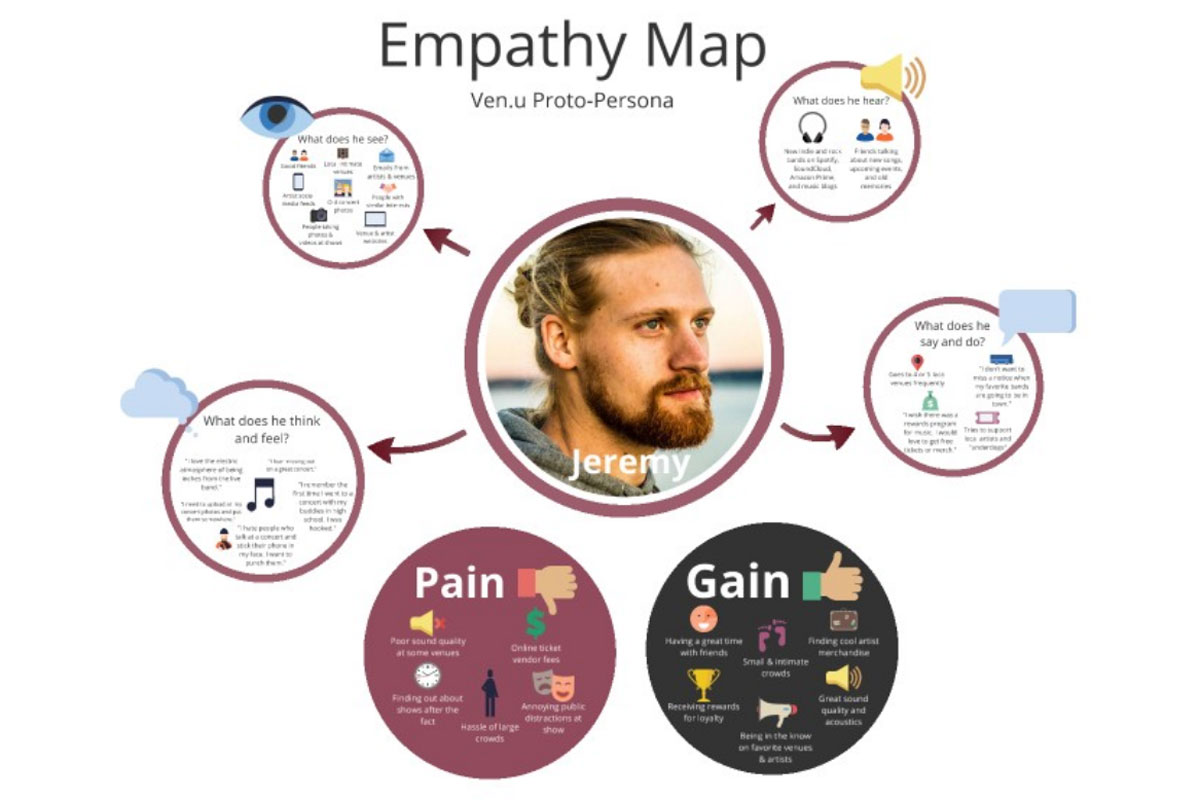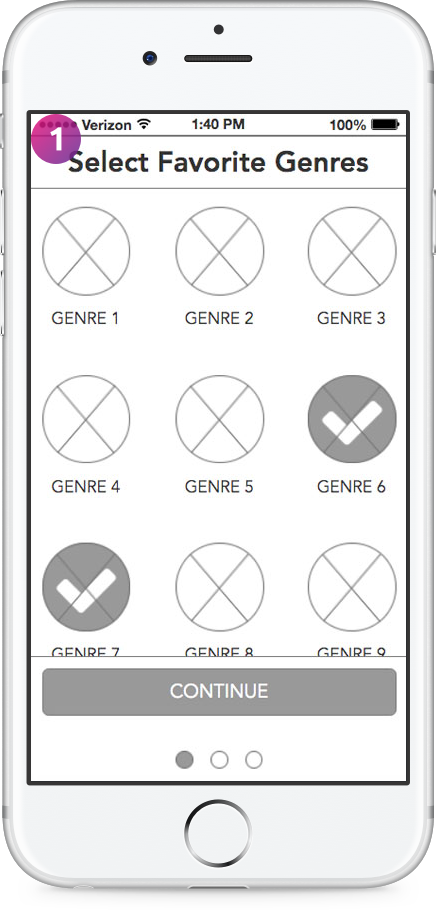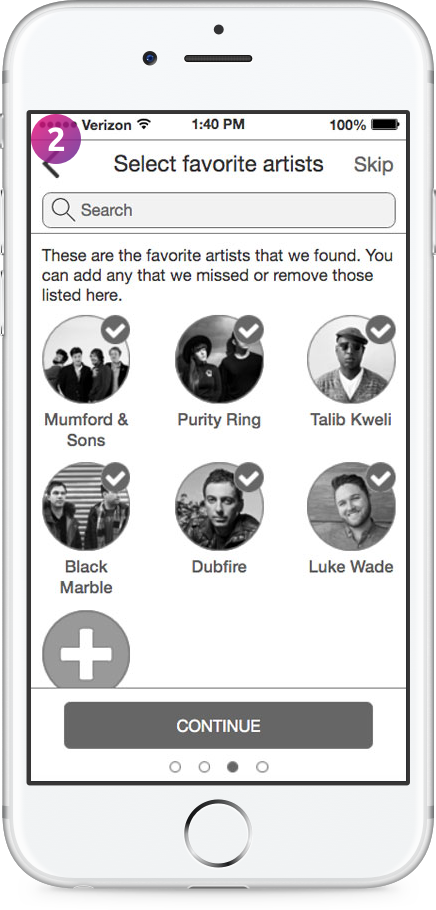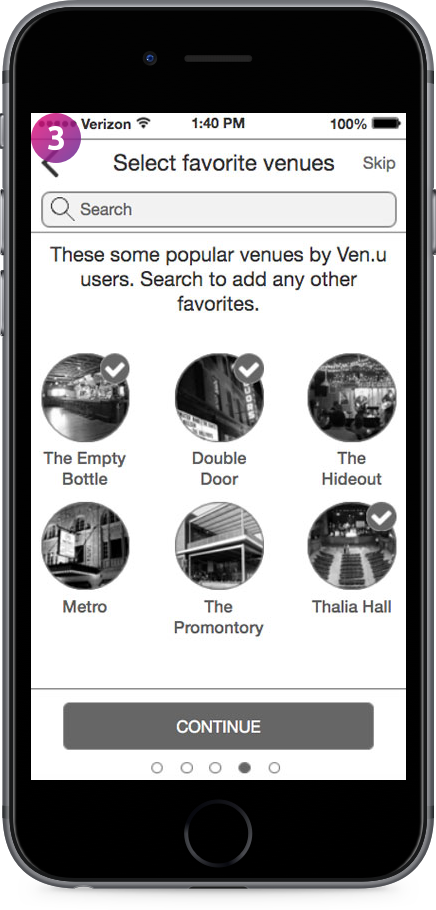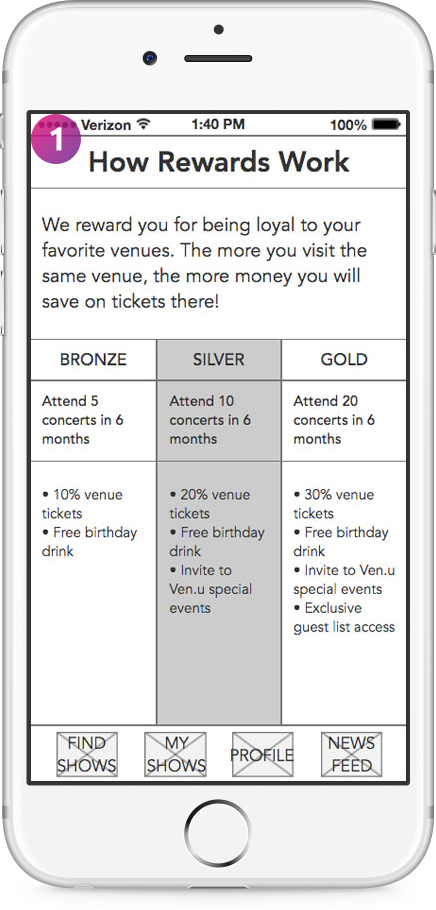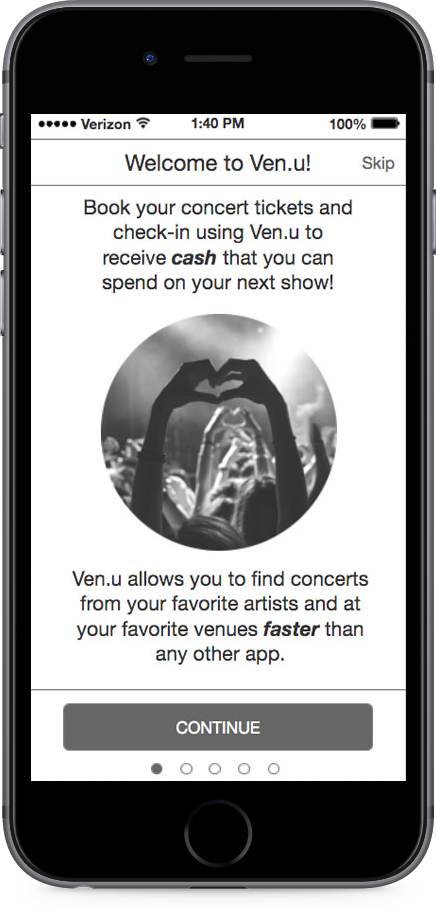We built on our research of concertgoers and their market by conducting ten user interviews. We recruited interviewees of diverse ages, all falling within our target range of 18-54. We also made sure our users were consistent concertgoers with an average attendance of one to two times per month. We asked both exploratory concert experience questions and specific Ven.u feature questions.
Testing our client’s assumptions led to insights then implemented in affinity diagramming.
All users needed many methods to discover concerts. Users followed artist and venue social media accounts, checked websites, signed up for email newsletters, and consulted with friends. Four interviewees had used Bandsintown before. It was the only aggregate source app, which drew from users’ music and social media accounts to track their favorite artists. In contrast to our client’s assumption, users were indifferent towards concert reflection. Most users shared photos or videos on social media soon after the show. But revisiting them was an infrequent occurrence. Instead, it was popular for users to tell stories face-to-face with family or friends. Only half of users had ever looked up a setlist and only a few still collected ticket stubs.

Discovery

Reflection
“I use artist and venue email lists, check websites, and follow social media feeds.” - Chelsea
“I usually reminisce during conversations and will pull up photos and videos.” - Anna
It was typical for users to frequent the same venues within their closest metro area or areas. Users preferred the intimate experience of small to medium-sized venues. They felt connected to the performance in a way that wasn’t possible in large crowds. For special events or favorites artists, they traveled farther or attended larger venues.

Venue Preference
“The Vic Theatre is my favorite. Artists that don’t tour very often come there because it’s a small venue and the atmosphere is electric.” - Paulette
Users enjoyed rewards programs offering cash back or points. It was important to be able to use points for something they already wanted. One interviewee was enthusiastic about his past experience with a venue’s loyalty program. Our client researched that specific venue and mentioned it to us as a possible model.

Rewards
“At the 9:30 Club in DC, I collected points that I could redeem for merchandise, tickets, etc. If a venue here had a rewards system like that, I would sign up.” - Dane
Ven.u’s business plan relied on check-ins, but users had mixed feelings and habits relating to them. Some checked-in to save memories or share with friends. But others found it annoying, intrusive, or unsafe. We needed to conduct further research on this feature. To better understand the venue perspective, we immersed ourselves in the Chicago live music scene. Our goal was to learn about the dynamics between venue employees, artists, and their fans. We interviewed four industry experts:
- Public relations professional at a small venue
- Booking manager at a small venue
- General manager at a live music tv station
- Local musician for 20 years
Venues’ and artists’ main method for promoting shows is digital marketing. Facebook comes first due to its large audience. Both also use Instagram, Twitter, and email newsletters. While venues will sometimes work with artists to get fans to see their posts, it’s still more dependent on the artist’s following. Venues focus on offering a consistent product.

Discovery

Venue Preference
“Social media effectiveness depends on the band. Whether they have a presence and if they attract a demographic that uses social media.” - Sarah, PR
“My philosophy is to make it a venue where people want to go because the music is good night after night, not because it’s their favorite band.” - JB, Booking
Some venues have subscription-based membership programs, but those members don’t correspond to their most frequent fans. Instead of purchased benefits, venues wanted benefits that encouraged repeat concertgoers. With artists doing the marketing heavy lifting, we found a disconnect between the promotional attempts of artists and venues. There was potential for Ven.u to help bridge this gap.

Rewards

Business Plan
“I would rather have a most valued customer rewards program, where you get points for every time you come, rather than our current VIP program.” - Michael, GM
I have an ongoing relationship with specific venues, but it’s kind of upsetting that they often don’t do more to promote shows.” - Darrin, Drummer
During six of our user interviews, we also conducted concept testing with the current state of the app. To prepare the team for potential pain points, we completed a heuristic evaluation.
Within a saturated market, Ven.u needed to match user expectations of essential features.

Discovery
- Users expected interactivity with the map and artist or venue names.
- All users expected ticket purchasing. Without it, saving shows didn’t make sense.
- “I’m confused by attend being a calendar feature. Are they free shows?” - Tonia
Personalization was necessary for users to find value in the news feeds.

Discovery

Venue Preference
- Users wanted filters for the global feed, such as by location, genre, artists, or venues.
- Users wanted the feeds drawing from their social media accounts’ likes and follows.
- “I can’t filter and it’s a constant scroll. I have no say about what I get to read.” - Mike
- Users preferred the local feed, approving of listed venues that included small bars.
- “This is cool. I haven’t seen anything with real local stuff like this before.” - Jenna
- “This would be useful. It would be nice to toggle between venues and artists.” - Dane
Users contradicted the assumed need to relive concert experiences. Enabling location services was crucial to Ven.u’s check-ins.

Reflection

Business Plan
- Although users liked their show history, they didn’t find it useful or necessary.
- “I’d be more interested in logging my photos and videos of each show.” - Tonia
- Users would only allow location services if the app demonstrated value to them.
- “I would like to get to know the app first before allowing location services.” - Paulette










